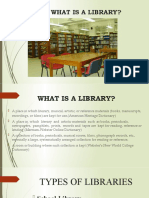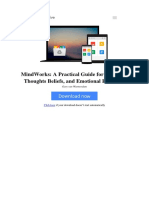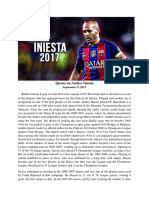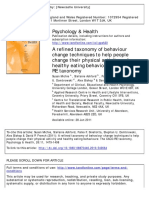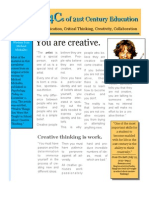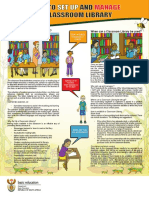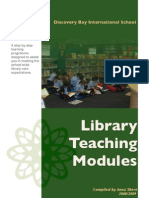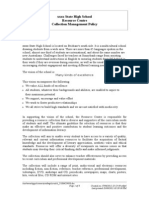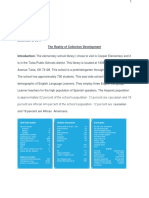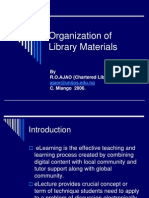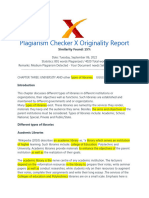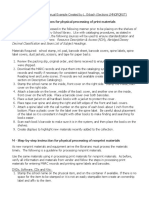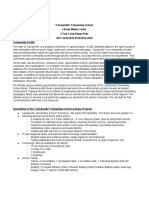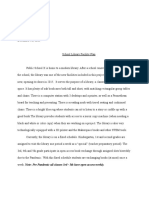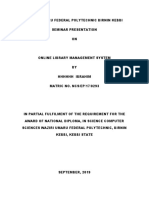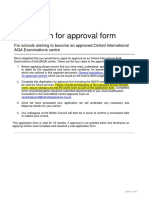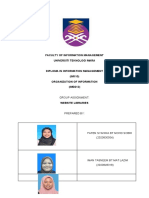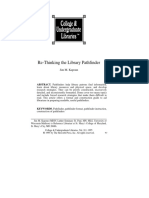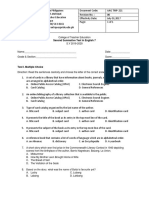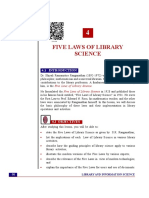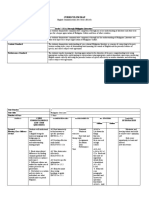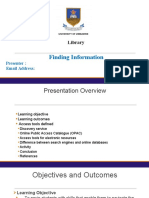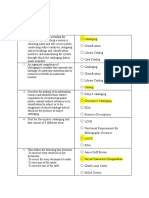0% found this document useful (0 votes)
253 views14 pagesLibrary Resource Organization Guide
The document provides guidance on organizing and maintaining a school library. It discusses arranging books and other resources on shelves by subject area and ensuring clear signage. It also covers compiling an inventory of resources, cataloging new materials, lending books to users, and maintaining resources in good condition. Computerization of the catalog is recommended where funds allow for easier searching and tracking of materials. Fines may be set for overdue items at the librarian's discretion depending on the school's policies.
Uploaded by
Ramy AhmedCopyright
© © All Rights Reserved
We take content rights seriously. If you suspect this is your content, claim it here.
Available Formats
Download as PDF, TXT or read online on Scribd
0% found this document useful (0 votes)
253 views14 pagesLibrary Resource Organization Guide
The document provides guidance on organizing and maintaining a school library. It discusses arranging books and other resources on shelves by subject area and ensuring clear signage. It also covers compiling an inventory of resources, cataloging new materials, lending books to users, and maintaining resources in good condition. Computerization of the catalog is recommended where funds allow for easier searching and tracking of materials. Fines may be set for overdue items at the librarian's discretion depending on the school's policies.
Uploaded by
Ramy AhmedCopyright
© © All Rights Reserved
We take content rights seriously. If you suspect this is your content, claim it here.
Available Formats
Download as PDF, TXT or read online on Scribd
/ 14

